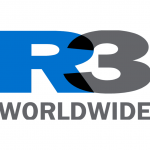(Marketingmagazine.com.my) -Everyone keeps telling me that there’s never been a better time to be in marketing.
My grey hair tells you that I’ve been around a bit so I can make the comparison. I certainly agree that we work in exciting times.
Marketing budgets are being redirected from Europe and North America to huge emerging markets, many of which are Asian.
Technology gives us new tools and ways to reach more and more people. Consumer behaviours and media channels change by the day.
Marketing is increasingly about content, engagement and entertainment. At the very outset, we have to ask ourselves how our brands add value to people, society and the planet.
There are certainly many challenges but I think we as an industry are making them harder.
If I can paraphrase one of the best campaigns of recent years, the award winning, Melbourne Metro Trains campaign, we are creating “dumb” ways for marketing and the brands we work for to die.
I think we’re doing that in seven key ways:
No 1 – believing the definition of marketing has changed. The best digital campaigns – like Dumb Ways to Die – do not prove that we need to go digital, they prove the power of a great insight, a message delivered via relevant channels and the success you get if you have the courage to do something different.
Once you think the definition of marketing has changed – you are already on the way to killing marketing. To the companies and boards who are winding down the marketing function whilst ramping up the digital and data units….I say be careful.
You are confusing what marketing is about with the tools, channels and feedback loops to do it.
No 2 – being less than 100% consumer obsessed. The consumer is everything and if we are not totally focused on them then why do we go to work. Understanding people keeps us focused on the “why” that gives marketing its purpose.
No 3 – being focused on what’s shiny and new, not what delivers. As an example, 10 years ago according to every conference and predictive article, TV was apparently dead.
The share price of the UK’s largest commercial broadcaster, ITV, has risen 5-fold since. I’m sure there are lots of TV broadcasters in Asia who are also defying that prediction.
No 4 – being on target and completely missing the point. You can hit your targets and get it totally wrong, today marketing encompasses everything a company does, it’s not just about media reach or brand awareness.
As I’m over 50, I seem to be tenaciously targeted by funeral planning ads! I can tell you the cost of a basic funeral has risen by 88% in the previous 10 years.
And you can start a funeral plan for as little as £5.40 a month. This isn’t by chance.
It reflects the next vicious decreasing circle marketers have collectively done to the consumer. 1. Target harder 2. Lower online response… back to target harder… diminish and … repeat.
No 5 – focusing just on the “what” and “how” – but forgetting the “why?” Marketers and business will always be tempted by the new and shiny, be it programmatic buying or a new digital platform.
But change needs to be embraced for a purpose and with a plan. The long-term business benefits in marketing start with the “why” – after that the “how” and “what” will have more effect anyway.
Unilever, for example, announced recently to their brand marketers that they were adopting a Zero Budgeting approach. This was mistakenly reported as meaning marketing budget cuts in some titles. But it doesn’t mean that.
They’re asking each brand to put the business case and strategy to go with it for investment and its return. If you argue a good business case you get it and if you can’t- well you don’t. The most important question to answer for a Unilever brand manager is no longer just “how” and “what…” its “why?”
No 6 – believing the magic answer to everything is branded content. Back to the shiny, shiny again. RBS is a bank; we need to be always on so customers can access us at two in the morning online or on mobile.
But people aren’t waiting in 24/7 for our branded content. Content needs to be emotional. It needs to connect with consumers in a relevant way. There may be stuff we can do as branded content that meets these criteria – but one shouldn’t assume it is easy to get right. In fact assume the opposite, it is very easy to get wrong.
No 7 – suicide by overdose. Already more than 40% of those under the age of 34 are using mobile ad blockers. Collectively by 2018 we’ll have gone a long way to having killed advertising in many consumers’ eyes.
By then half of them will have claimed to be closed to it and irritated by it mentally. In our mobile world, half will probably be at the stage where they physically block ads on their device.
This last one in particular is a serious concern because our behaviour is actively encouraging this response.
Everyone is creating content, flooding the digital landscape with branded messages. The noise of our clutter is becoming deafening.
We need to be wary that our messages can be annoying, repetitive and intrusive. There’s a lot of noise out there and it’s not about who’s shouting loudest.
There are two solutions
Standardise and improve ad experience. The WFA is working hard with industry stakeholders to encourage the first steps in this direction.
Collective consumer education, quality and choice. We’ve all (agencies, publishers and brands) encouraged users to want something for nothing: access to great content without having to pay for it, directly or via advertising.
Without direct payment or ad-funded the quality of content will diminish. At the same time we need to raise our own standards – the quality of what is being produced as ads is in our own hands. It needs to improve.
Over the last ten years we’ve reshaped our teams, added new agencies, recruited specialists to ensure that we can hold honest conversations with suppliers.
We’ve conceived internal digital transformation programmes and set up social media command centres.
In our rush to get to grips with the digital reality, we have sometimes forgotten the golden rules of our profession….
I have a firmly held belief that brand is everything.
It’s not just a pretty logo, billboard or TV spot. It’s much more than that.
It’s the product, the people, the promise, the purpose and the point of view of an organisation. It’s what you say, it’s what you do, it’s who you are.
My day job is CMO at RBS, once one of the biggest companies by market capitalization in the world before the global financial crisis.
Now my job is to restore people’s trust in the brand, which in large part still belongs to the British taxpayer.
I’m not rushing to spend money on digital media. I’m starting with the people that RBS employs.
Those same people who saw it rise from being a provincial Scottish bank to one of the world’s biggest companies then witness its fall and the ensuing government bailout.
My job is to galvanize the workforce as internal advocates for the brand. That’s where brand starts.
My two preferred definitions of what a brand is haven’t changed either:
“A brand is what a brand does,” said Arun Sarin ex CEO Vodafone
“A brand is what people
say when you are not in the room” according to Jeff Bezos, CEO Amazon
Now if I asked do these “tech companies” deliver on brand, by these definitions? My guess is you’d probably go “yes”. Mainstays of good marketing – are things like defining a Mission (why does your business exist) or the Vision (where do I see my business going).
These tech brands eat many establish brands for lunch in this area.
Our role as marketers is to provide human understanding: understanding people within our organizations and the people outside our organizations, our customers and potential customers. This fundamental will never change.
As in the pre-digital age we need to use our understanding of consumers to deliver the big insight, the unique moment that makes consumers consider our brands and reconsider their existing purchase choices.
For all the complexity of today’s marketing, which makes more and more demands on us as CMOs, the principles remain the same.
We need to entertain and inspire in order to change or reinforce behaviours.
To do so, brands need to act and think like people. In my experience, the people I’ve most admired have a number of traits in common: they are passionate and entertaining, they have a point of view, they show empathy, they are open and transparent in their dealings.
Most importantly, you know you can trust them.
The successful brands of the future will be those that most effectively embrace these characteristics. These attributes will govern not only how brands communicate and serve their customers.
In an increasingly open and transparent world, they will also be the yardstick by which successful corporations will be judged.
So my message to you is to avoid the seven sins of marketing suicide. In a paraphrase of the words of JF Kennedy “I’m asking not what marketing does for you – but what you can do for marketing.”
Because if we take care of it, marketing won’t just survive – it will thrive.
As marketers we all have responsibilities.
First it is to the brand or business you work on and to help grow it.
Second is to marketing itself.
Third is to the people you bring on – the next generation of talent and the other companies and agencies you work through and with.
If we act collectively to look after our profession, if we cherish it, nourish it and excel at it and marketing will surely continue to flourish.
David Wheldon is president of the World Federation of Advertisers (WFA). This is his address at the recent WFA Global Marketer Conference in Kuala Lumpur.
Enter the prestigious APPIES Malaysia Marketing Awards today!
Known as the ‘TED for Marketing’, campaign entries are presented by their brand marketers or campaign creators in an interactive format comprising of a 4-minute creative reel summarising the overall marketing campaign, followed by a 6-minute oral presentation highlighting significant aspects of the campaign, and finally a Q&A with the audience.
Entrant campaigns must have run between 1 January 2015 and 29 February 2016 in any of these categories:
1. Consumer Durables
2. Consumer Services
3. Food and Beverage
4. Non-food FMCG
5. Business Services
6. Government, Cultural, Social and Environmental campaigns.
Top brands including P&G, Mondelez International, Coca-Cola, Google, IKEA, IBM,
Unilever, Amazon, Shangri-La Hotels & Resorts and Asia Pacific Breweries have
all won at the APPIES over the years. Will your Brand or Agency be next?
Download details and your Entry Kit here:
Closing Date: 31 March, 2016
All entries are to be submitted to [email protected] via file transfer protocol.
MARKETING Magazine is not responsible for the content of external sites.
An afternoon of conversations we never had, with leaders most of you never met.
Discover what’s possible from those who made it possible. Plus a preview of The HAM Agency Rankings REPORT 2024.
Limited seats: [email protected]
BOOK SEATS NOW










